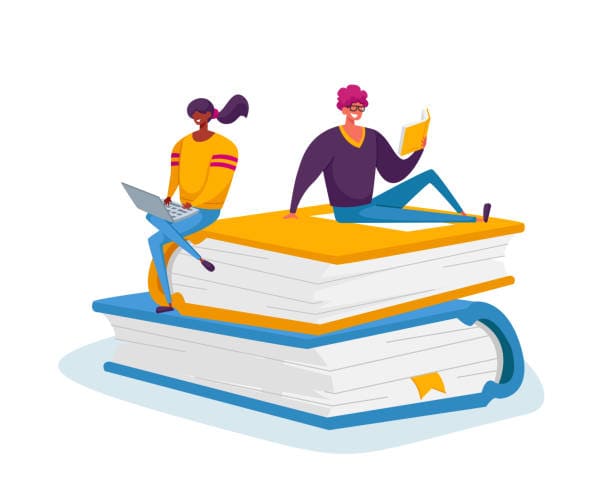Class room Cell phone Use Is Fraught. It Doesn’t Have to Be

Class room Cell phone Use Is Fraught. It Doesn’t Have to Be
Pre-pandemic, student cellphone use (for nonacademic use—I’ve always allowed
my English-language-learner-students use it for translations) in my classes
was a relatively minor problem. Generally, there was no one who was on it
obsessively, and one warning was sufficient. I would now and then have to ask
a student to give me his/her phone until the end of the period. I also told
students to let me know if they were expecting a family or work-related call.
If that was the case, they could answer it and talk outside.
Since we returned from distance learning, the previous paragraph generally
describes the situation for approximately 85 percent of my students (though I
also do tell students in my Junior classes that a quick look now-and-then is
okay as long as they deliver on their work). There seems to be an almost
obsessiveness with the phone from the remaining students, and that percentage
seems to track with my colleagues’ experiences.
I’m no clinician, but it appears to me that some students’ reliance on screens
during the pandemic lockdown might have heightened their reliance on phones
for human contact outside their families, and they have not been able to wean
themselves off it.
There is seldom a day now that goes by without my asking for a phone from at
least one student (who has already received a warning). I have excellent
relationships with my students so, except for perhaps an unhappy facial
expression or some slight whining, they are always quickly handed over and
returned at the end of class.
Courtney Rose, Ed.D., is an educational consultant, culturally
relevant/responsive educator, and the founder of Ivy Rose Consulting through
which she offers both individual and group services that foster critical
dialogue, collaborative learning activities, and the exploration/development
of innovative strategies to humanize teaching and learning. She currently
serves as a visiting assistant teaching professor in the urban education
program at Florida International University:
Reading this question, some of you may feel like cellphone usage is a minor
problem within the current social and political landscape of
schools/education. However, when we dig into these “surface-level problems,”
they often help us to identify deeper issues that are impacting the overall
class and school culture and enable us to find paths to better work for and
with our students. While “phone jails” and other phone bans may work in the
short term, I propose a three-point strategy that may shift the culture around
phone use altogether.
Step 1, Check Your Assumptions About Cellphone Usage: It’s easy to assume that
all nonacademic cellphone usage is because they are not interested or invested
in the academic content. However, it’s important to remember that sometimes
students are not constantly using and checking their phones because they want
to but because they may have more responsibilities on their shoulders than the
average student.
For example, some of our students share in the responsibilities of taking care
of younger siblings or have to hold after-school jobs to contribute to the
household and may be communicating with family members or bosses about these
responsibilities. Continuously reprimanding or punishing these students could
add to the stress and anxiety that they may already be experiencing as they
attempt to manage everything. Instead, having a private one-on-one
conversation creates space for you to collectively work out a plan or even
provide some additional support to help them navigate through their current
circumstances.
Step 2, Reflect on Your Instruction: If nonacademic cellphone use continues to
be a pervasive issue, or if Step 1 reveals that it is a lack of investment in
class content, it might be time to switch the lens and instead of asking why
students can’t stay focused, ask are my lessons engaging enough to hold their
focus? We’ve all sat through a faculty meeting or PD session and found our
attention wandering to text messages, social media, or that stack of ungraded
papers that seems like a much more engaging or productive use of our time.
However, when observing similar behavior from our students, many don’t take a
moment to think that perhaps the same dynamics are playing out.
If cellphone use has become such a major issue that it is taking away from
instructional time, it’s the perfect opportunity to stop and reflect on what
you can do to create a more engaging environment and open it up to the
students to gain some of their perspectives on what is working, what isn’t,
and suggestions for improvement. This step alone could increase students’
investment and engagement in the space as they feel their voices are valued in
the creation of instructional practices.
Step 3, Reframe “Nonacademic” Cell Use as an Asset to Your Instruction:
Building on the last step, if students are naturally gravitating toward
something, why not lean into it and incorporate it into your instructional
practice? Programs like Nearpod and Kahoot already enable educators to create
interactive presentations/lessons that students can access through their
phones, and many educators are utilizing apps as tools to assess student
learning (i.e., creating TikTok videos or Instagram Reels teaching or
incorporating academic content, creating Instagram pages for a book character,
using other video- and audio-editing apps to create storytelling projects that
explore historical events or present-day social and political issues).
Additionally, while there are always pros and cons to the infusion of
technology into the educational process, if we look at the current landscape,
preparing our students for the world requires that we equip them with the
technological skills and creative ingenuity that are being prioritized in the
job market and captured in apps like TikTok and Instagram. In my work with
educators, I often ask, What world are you preparing your students for? Again,
in assessing your approach to cellphone usage, this may be a valuable question
to reflect on.
As with most approaches, there is no one-size-fits-all method. So, I hope you
take what resonates with you and make adjustments as you reflect on the
specific context of your learning community.
Jennifer Casa-Todd is currently a teacher-librarian, a former literacy
consultant and English teacher, and the author of Social LEADia: Moving
Students from Digital Citizenship to Digital Leadership:
I have definitely noticed an uptick in students using their devices in class
for nonacademic purposes. I think this is because when kids were learning
remotely, they could more easily answer a text or play a game without anyone
noticing. It is also because adolescents are more peer-driven and their phones
are their gateway to connections to their friends.
I have always advocated for students to be able to use their devices in class,
but if it impedes on their learning or attention, then this is a concern.
Research around multitasking suggests that when we switch from one task to
another, our brains take time to readjust to the original task, which
decreases productivity and efficiency. One of the CASEL
social-emotional-learning skills is self-management, and so I share this
research explicitly with kids. One of the things I have done (usually early on
in the semester) is have a piece of paper beside their desk and make note of
every notification they get in class. Then, take all of these and transfer
them to the whiteboard or a chart paper to engage in a conversation about the
impact distractions may have on learning. We then share strategies. Students
share what they do to ensure they focus in class (I learned about the Pomodoro
app in one of these conversations). I also invite students during work periods
or study periods to give me their phones if they feel they may be distracted.
I have also used a Red, Yellow, Green method in my class whereby I would
indicate when a cellphone could be used on the class agenda. Red: Keep phones
in backpacks, Yellow: Use your judgment about whether the phone is distracting
you or helping you; Green: Go ahead and use your device to listen to music or
for a brain break. This is especially helpful when I am teaching a class with
students I don’t know (I am a teacher-librarian so sometimes I only have a
class for one lesson). Being explicit at the beginning about cellphones and
asking them to put their devices away for a set part of the lesson creates
transparency and accountability. I also share the consequence: They risk
losing their device until the next activity and/or the end of class. When I do
take a phone, kids hand it over without issue because I have made the
expectations clear.
Most importantly, I do not make assumptions about what kids are doing on their
phones. I have made it a practice to ask, “Is your device helping you or
distracting you right now?” The answers are often surprising, and I have
learned so much about my students and some of the apps they use for
productivity as a result.
July Hill-Wilkinson is a veteran classroom teacher, adjunct professor, and
former administrator. She currently works as an instructional coach and
curriculum leader in Southern California high schools:
Unfortunately, phones are ubiquitous in our classrooms these days.
Post-pandemic, after a year where screens were their everything, it has gotten
worse. In my experience, there are three keys to combating cellphone
use—convince them to police themselves (as opposed to trying not to get
caught), create a space to put the phones, and create some peer pressure.
At the end of the day, loss of learning is the real issue. Students are
convinced they can pay attention for a minute, check a text for a minute,
refocus on class, and then peek down at a video without any detriment to their
learning. That is not working out so well. Step one is to convince them that
their minds simply don’t work that way. There are studies they can read and
discuss, activities they can participate in, and even experiments during class
that can be incorporated into the first week or two of school to let them
understand the issue. Convincing them that they are creating problems for
themselves is an important step toward flipping the script on responsibility.
Once you convince them that there is, in fact, an issue, the best-case
scenario is to create a spot for the phones during class and have them see it
as a resource instead of a punishment. Pockets, desks, and binders—nope, those
do not work. I use “phone boxes” (those fancy cardboard photo boxes you can
find at hobby stores) in my class. There is one on each table. From the start
of the year, I train the students to place phones in the box when they sit
down for class. It is not up front where people can steal it, or where
notification lights are visible; it is close enough to be safe but hidden
enough to be out of mind.
If all else fails, peer pressure and competition can work wonders. Pitting
periods against each other for the fewest “sightings’’ and a scoreboard up
front for all to see has worked better than most strategies. An important
note: I don’t identify the guilty party right away when I see a phone. I don’t
want classmates to really know who it was. Once I spot one, I finish what I am
doing, sometimes tap the user subtly on the shoulder as I walk around, then
after a few minutes, I nonchalantly walk to the scoreboard and add a mark.
Inevitably, they all look around for the perpetrator, but if done well, they
are not sure who. They complain and call out to each other to keep phones
away. That message is better coming from them than from me. At the end of a
month, or a unit, or something, they get whatever small-scale prize I can
offer. Less homework, extra credit, extra videos, whatever fits the situation.
If students have cellphones in class, some students will use them for
nonacademic purposes. That is a given. I have two different approaches to this
distraction.
First, if the school does not have a uniform policy, then I would create one
for my class. I would not hesitate to collect cellphones before class begins
and keep them in a secure box.
However, a more productive response to this distraction is to use the
cellphone for part of the class as a learning tool. Find ways students can use
their phones for research or respond to questions delivered through gamified
tools like Kahoot! An instantaneous class poll requires students to use their
phone and can lead into a rich class discussion.
For example, incorporate the use of Kahoot or Quizziz games. Use Flip
(formerly Flipgrid) to record exit-slip videos and give constructive feedback
to one another using the app. This strategy will undoubtedly ask students to
use their language skills and direct the phone usage to more academic
purposes. Hopefully, by implementing these practices and having conversations
with parents/guardians beforehand about the usage of phones in the classroom,
students will be less distracted by them.
Just a reminder; you can subscribe and receive updates from this blog via
email (The RSS feed for this blog, and for all Ed Week articles, has been
changed by the new redesign—new ones are not yet available). And if you missed
any of the highlights from the first 10 years of this blog, you can see a
categorized list below.


